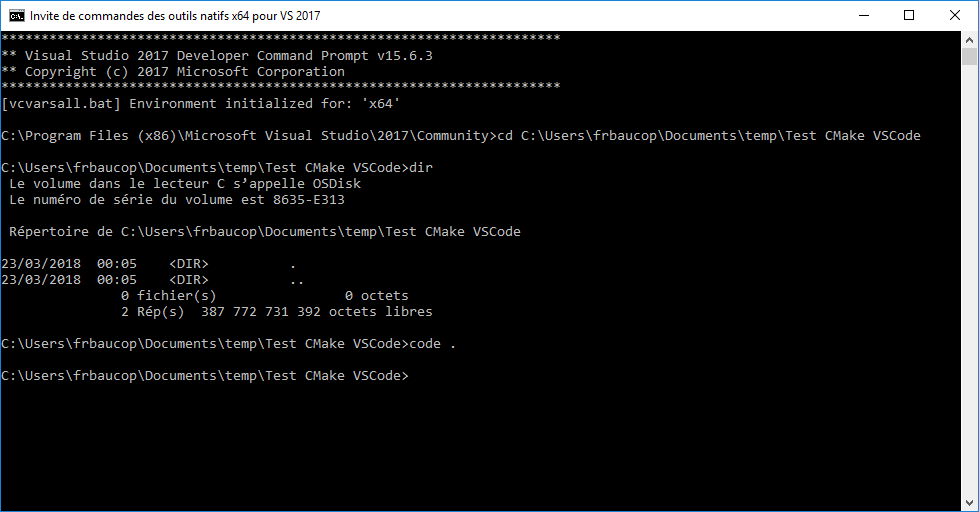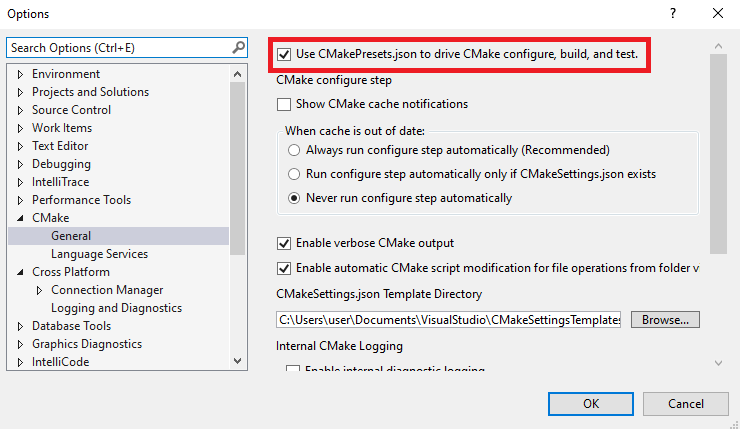
To uninstall use sudo dpkg -P foo or sudo apt purge foo. Or, when using the cmake (1) command-line tool's -install mode, one may specify a different prefix using the -prefix option:Install ルール (install()) CMake Version. cmake - Configuring incomplete, errors occurred So I extended my local settings.
Cmake set gcc archive#
cmake CMake Error: CMAKEAR was not found, please set to archive program. You probably need to select a different build tool. The CMAKE_INSTALL_PREFIX may be defined when configuring a build tree to set its installation prefix. cmake CMake Error: CMake was unable to find a build program corresponding to 'MSYS Makefiles'. Use the GNUInstallDirs module to provide GNU-style options for the layout of directories within the installation. On many systems, you may find that CMake is already installed or is available for installation with the standard package manager tool for the system.
Cmake set gcc install#
Getting Started ¶ Getting and Installing CMake on Your Computer ¶ Before using CMake, you will need to install or build the CMake binaries on your system.
Cmake set gcc windows#
( Not yet implemented) If the depending file is a Windows Store app, and the dependency is listed as a dependency in the application's package manifest, the dependency is resolved to that file. Prior to CMake 3.27, the results were reported with lowercase DLL file names, but the directory portion retained its casing. Between runs, CMake preserves the values set for all options. Recently I've added some Python scripts to a few places in the source tree. Once you have a GCC toolchain, configure your build of LLVM to use the new. At this point, my binaries end up in cmake_install_prefix, and they can be executed with no additional work. After setting cmake_install_prefix and configuring, it generates makefiles which can then be used to build and install with the very standard: make make install.Its time to do CMake Right: A nice set of best practices for Modern CMake projects. This one is in the gcc-c++ package, as Rex Dieter already answered. And so, youll find OSs like CentOS7 with GCC 4.8, with almost-complete. It is also probably a good idea to avoid passing -I/-isystem for directories that the compiler already assumes as default include directories. Please set CMAKECXXCOMPILER to a valid compiler path or name. Build and Run Run the cmake executable or the cmake-gui to configure the. Perhaps it makes sense to introduce this change in CMake itself, as I think it may be useful for everybody. Youll also need to install CMake, a compiler, a debugger, and build tools. On the WebKit project we work-around'ed this by calling GCC at run-time to obtain the list of system includes, to automatically add this directories to the above variables. So CMake automatically filters /usr/include from the list of includes when calling the compiler.īut when cross-compiling or when using a non-default system include directory, the build breaks.

This didn't broke the 99% of the standard builds because CMAKE_C_IMPLICIT_INCLUDE_DIRECTORIES and CMAKE_CXX_IMPLICIT_INCLUDE_DIRECTORIES already default to /usr/include.


For example: cmake -G 'Your Generator' -D CMAKECCOMPILERgcc-4.2 -D CMAKECXXCOMPILERg++-4.
Cmake set gcc full#
Set the appropriate CMAKEFOOCOMPILER variable(s) to a valid compiler name or full path on the command-line using cmake -D. Then you let your users tell you which set of flags they want to use: Using presets: cmake -presetmsvc cmake -presetgcc cmake -presetclang Using toolchains: cmake -S. CCgcc-4.2 CXX/usr/bin/g++-4.2 cmake -G 'Your Generator' path/to/your/source. There are some extensive examples in the documentation. GCC 6 has introduced a change that broke some C++ projects when the project uses system includes (-isystem) via passing the parameter SYSTEM to CMake's functions include_directories or target_include_directories. With a preset, it's as simple as writing a CMakePresets.json file.


 0 kommentar(er)
0 kommentar(er)
